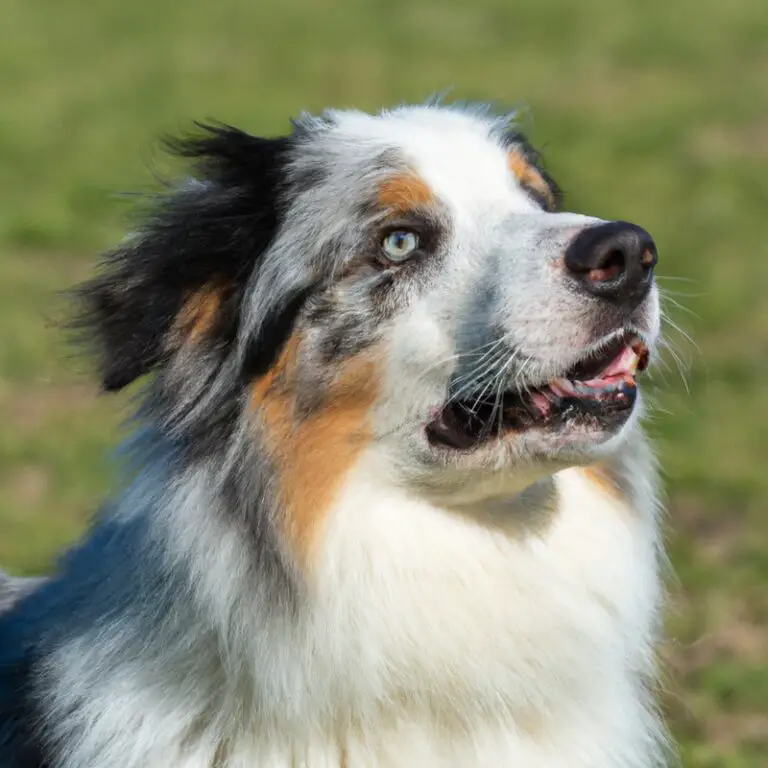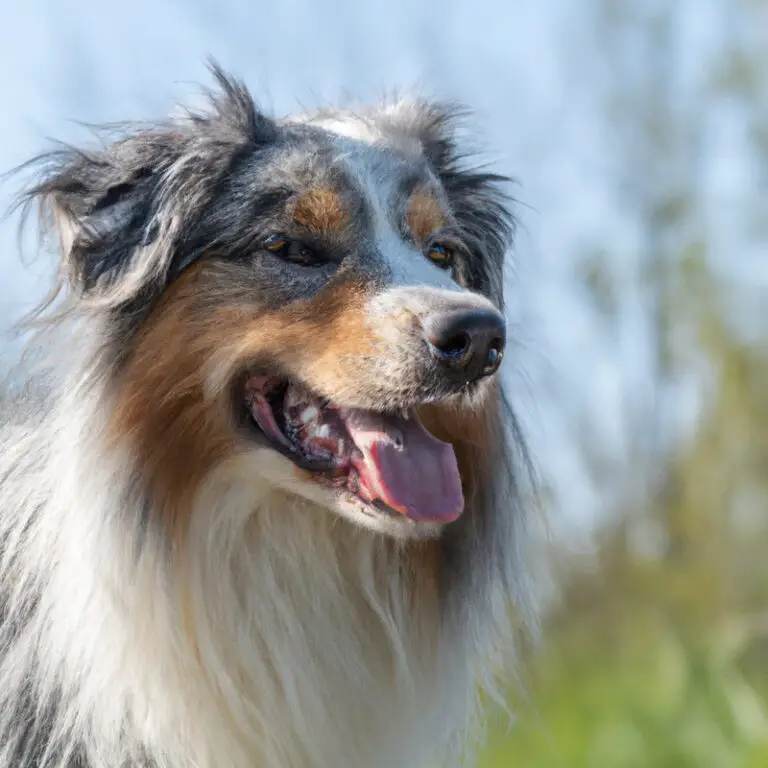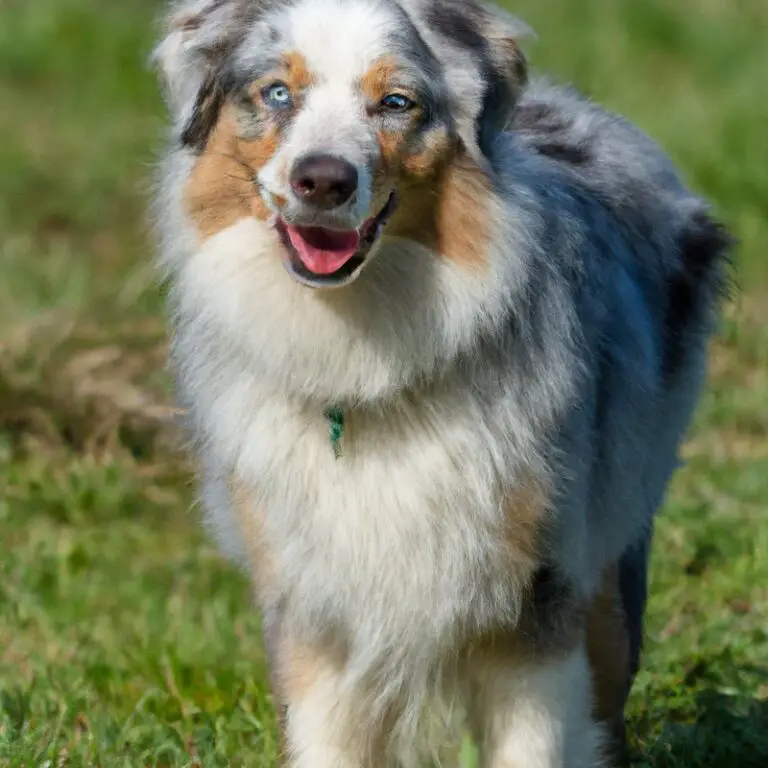What Are The Best Training Methods For Teaching An Australian Shepherd To Stop Chasing Squirrels?
Key Takeaways:
- Positive reinforcement techniques are the most effective for teaching Australian Shepherds to stop chasing squirrels.
- Consistency and patience are key in training an Australian Shepherd to curb its instinct to chase squirrels.
- Diverting the dog’s attention with alternative activities or toys helps in redirecting its focus away from squirrels.
- Using a leash or long line during training sessions can aid in maintaining control and preventing the dog from chasing squirrels.
Imagine this scenario: you’re strolling through the park with your trusty Australian Shepherd by your side. The spring air is crisp, the birds are chirping, and suddenly, a squirrel darts across your path.
In a matter of seconds, your normally well-behaved companion is off like a rocket, chasing after his fluffy nemesis.
Sound familiar? If you’re nodding your head in agreement, then this article is for you.
As an experienced dog trainer and Australian Shepherd enthusiast, I’ve encountered my fair share of squirrel-chasing antics.
In this blog, I’ll share the best training methods to teach your Australian Shepherd to stop chasing squirrels, so you can have a more peaceful and enjoyable walk. So, let’s dive in and put those squirrel-chasing days behind us, shall we?
| Training Methods | Pros | Cons |
|---|---|---|
| Positive Reinforcement |
|
|
| Distraction Techniques |
|
|
| Boundary Training |
|
|
| Professional Training |
|
|
Understanding Australian Shepherds and Their Instincts
Characteristics and Traits of Australian Shepherds
Australian Shepherds are known for their intelligence, agility, and loyalty. They are medium-sized dogs with a strong work ethic and a desire to please their owners.
Australian Shepherds are highly active and require regular exercise to keep them physically and mentally stimulated.
They are also known for their herding instinct and may try to herd other animals or even family members. Australian Shepherds are typically friendly and good with children, but they can be reserved with strangers.
They have a double coat that requires regular brushing to keep it clean and free from matting.
Overall, Australian Shepherds make wonderful companions for active individuals or families who can provide them with plenty of exercise and mental stimulation.
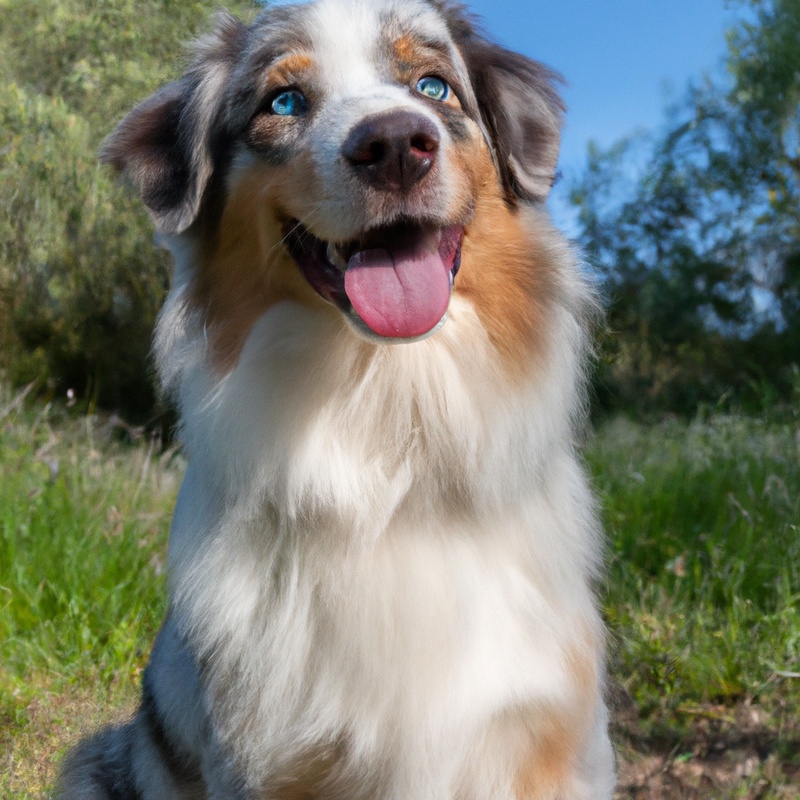
The Prey Drive and Chasing Instinct in Australian Shepherds
Australian Shepherds have a strong prey drive and chasing instinct. This is a natural trait in their breed and stems from their history as herding dogs.
It’s important to understand that these instincts can be difficult to completely eliminate, but with proper training and management, you can teach your Australian Shepherd to control their chasing behavior.
It’s crucial to provide outlets for their instincts through appropriate games and activities, while also teaching them obedience commands and distraction control. Remember, consistency and patience are key in training your Australian Shepherd to overcome their chasing instincts.
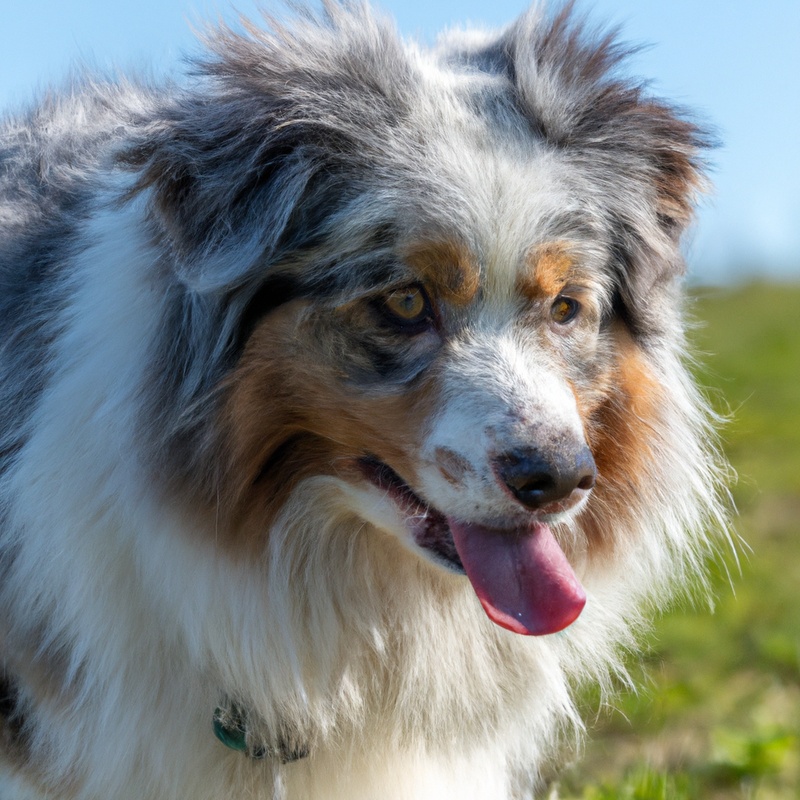
Importance of Training to Stop Chasing Squirrels
The Dangers of Uncontrolled Chasing Behavior
Uncontrolled chasing behavior in Australian Shepherds can pose several dangers. Firstly, it can lead to accidents and injuries for both the dog and others.
The dog may run into traffic or collide with obstacles while chasing squirrels.
Secondly, it can strain the relationship between you and your dog, as you may become frustrated or worried about their safety. Moreover, uncontrolled chasing behavior can result in legal issues if your dog disturbs wildlife or damages property.
It’s important to address this behavior through training to ensure the safety and well-being of your Australian Shepherd and those around them.
Benefits of Teaching an Australian Shepherd to Stop Chasing Squirrels
Teaching an Australian Shepherd to stop chasing squirrels has several benefits. Firstly, it helps ensure the safety of your dog.
Uncontrolled chasing behavior can lead to accidents or injuries, such as getting hit by a car or falling from heights.
By teaching your Australian Shepherd to stop chasing squirrels, you can minimize the risks associated with this instinctual behavior. Secondly, training your Australian Shepherd to stop chasing squirrels allows for better control and obedience.
It establishes you as the pack leader and strengthens your bond with your dog.
When your dog learns to listen and follow your commands, it becomes easier to manage their behavior in various situations. Thirdly, teaching your Australian Shepherd to stop chasing squirrels also enhances their overall quality of life.
It gives them the freedom to safely explore their environment and interact with other animals and people.
They can enjoy outdoor activities without constantly being distracted by the urge to chase squirrels. By focusing on positive reinforcement training techniques and using rewards, treats, and clicker training, you can effectively redirect your Australian Shepherd’s behavior.
Recall training, practicing in controlled environments, and managing the outdoor space can further aid in minimizing the chasing opportunities.
Seeking professional help is also beneficial in creating an individualized training plan and addressing any specific challenges or concerns. Consistency, patience, and persistence in training are key to achieving the desired results.
Overall, teaching an Australian Shepherd to stop chasing squirrels ensures their safety, improves their obedience, and enhances their overall quality of life.
It is an essential part of responsible dog ownership and can lead to a harmonious relationship between you and your furry friend.
Positive Reinforcement Training Techniques
Using Rewards and Treats to Associate Positive Behavior
Using rewards and treats is a highly effective method for associating positive behavior in Australian Shepherds. When training your dog to stop chasing squirrels, rewards can be a powerful tool.
By offering treats immediately after your dog displays the desired behavior, you reinforce the connection between the action and the reward.
Choose treats that are irresistible to your Australian Shepherd, such as small pieces of cooked meat or soft, chewy treats. Make sure to reward your dog as soon as they demonstrate the behavior you want, such as sitting calmly or redirecting their attention away from the squirrels.
Consistency is key when using rewards and treats.
Be sure to reward your dog consistently for the desired behavior, while also withholding rewards for behaviors you want to discourage. This clear distinction will help your Australian Shepherd understand which behaviors are rewarded and which are not.
Additionally, it’s important to gradually reduce the reliance on treats as your dog becomes more proficient in the desired behavior.
Over time, you can replace treats with verbal praise, physical affection, or other desired rewards. This helps ensure that your dog maintains their positive behavior even without the presence of treats.
Remember, positive reinforcement training is all about creating a positive association between desired behavior and rewards.
By using rewards and treats effectively, you can teach your Australian Shepherd to stop chasing squirrels in a humane and gentle way. Keep practicing, be patient, and enjoy the process of training your furry friend.
Clicker Training for Redirecting Behavior
Clicker training is an effective technique for redirecting a dog’s behavior, including chasing squirrels. It involves using a small handheld device that makes a clicking sound when pressed.
Here’s how it works:
- Start by associating the clicker sound with a treat. Press the clicker and immediately give your Australian Shepherd a treat. Repeat this several times so they understand that the clicker means something good is coming.
- When your dog starts to chase a squirrel, use the clicker to interrupt their behavior. Click and redirect their attention to you.
- Once your dog looks at you or comes back to you, reward them with a treat and praise. This reinforces the desired behavior of focusing on you rather than chasing squirrels.
- Practice this consistently, gradually increasing the distractions. Gradually reduce the need for treats, but always remember to praise and reward your dog for redirecting their attention.
Clicker training helps to create a positive association with the desired behavior and reinforces it effectively. It’s important to be patient and consistent in your training efforts, as it may take time for your Australian Shepherd to fully understand and respond to the training.
Remember, positive reinforcement is key.
Avoid punishment or harsh methods, as they can damage the trust between you and your dog. By using clicker training, you can redirect your Australian Shepherd’s behavior and help them resist the temptation to chase squirrels.
Recall Training for Distraction Control
Teaching an Effective Recall Command
Teaching an effective recall command is crucial for keeping your Australian Shepherd from chasing squirrels. It’s all about getting your pup’s attention and bringing them back to you when needed.
Here are some simple steps to help you achieve this:
- Start in a quiet, distraction-free environment. Use a clear and consistent recall command, such as “come” or “here.” Say the command in a firm but friendly tone.
- Make training fun and rewarding. Use high-value treats or their favorite toy as a motivator. When they come to you, praise and reward them immediately.
- Gradually increase the level of distractions during training sessions. Start with quiet distractions like toys or treats, then move up to more challenging distractions like squirrels or other animals.
- Practice recall training in different environments. Take your Australian Shepherd to different locations, such as a park or a friend’s house, to reinforce the recall command in various settings.
- Avoid using the recall command for negative reasons. Never call your dog to you to scold or punish them. You want them to associate the recall command with positive experiences.
- Be patient and consistent. Recall training takes time and effort. Practice regularly and reinforce the command consistently, even after your Australian Shepherd has mastered it.
Remember, teaching an effective recall command requires patience and consistency. With time and practice, your Australian Shepherd will learn to listen and come back to you, even in the face of tempting squirrels.
Practicing Recall Training in Controlled Environments
Practicing recall training in controlled environments is essential for teaching your Australian Shepherd to stop chasing squirrels. This training helps your dog to respond to your command to come back to you, even in distracting situations.
To start, find a quiet and secure area indoors to practice recall training.
Use a long leash to ensure control while maintaining a safe distance. Begin by calling your dog’s name and issuing the recall command in a clear and upbeat tone.
When your dog comes to you, reward them with praise and a treat.
Repeat this exercise several times, gradually increasing the distance between you and your dog. Once your dog becomes proficient in indoor recall training, you can move to more controlled outdoor environments like a fenced yard or a quiet park.
Again, use a long leash for added control.
Practice recall training in these environments, gradually introducing distractions such as toys or other dogs. Remember to reward your dog for coming to you every time.
Consistency and patience are key.
It’s important to practice recall training regularly to reinforce the behavior. In addition, always provide positive reinforcement by praising and rewarding your dog when they respond to the recall command.
Avoid practicing recall training in uncontrolled areas, such as busy streets or dog parks, until your Australian Shepherd has mastered the command in controlled environments.
This allows you to gradually increase the difficulty level and ensure your dog’s safety. By practicing recall training in controlled environments, you are setting your Australian Shepherd up for success.
This training will help them resist the urge to chase squirrels and respond to your command, keeping them safe and under control.

Managing the Environment to Minimize Chasing Opportunities
Using a Leash and Harness for Control
When it comes to controlling an Australian Shepherd’s chasing behavior, using a leash and harness is crucial. By having your dog on a leash, you have physical control and can prevent them from chasing squirrels.
A harness, specifically a front-clip harness, is recommended as it gives you more leverage and control over your dog’s movements.
This helps redirect their attention and prevents them from pulling or lunging towards squirrels. Remember to choose a harness that fits properly and is comfortable for your dog.
Keep your dog on a leash and harness during walks and outdoor activities to maintain control and reduce the opportunity for chasing.
Securing Backyard and Outdoor Spaces
To secure your backyard and outdoor spaces and prevent your Australian Shepherd from chasing squirrels, there are a few effective measures you can take:
- Install a sturdy fence: Make sure your backyard is fully enclosed with a secure fence that is tall enough to prevent your dog from jumping over. Consider using materials like chain-link or wood that are difficult to climb or dig under.
- Reinforce your fence: Regularly inspect your fence for any gaps, loose boards, or holes that your dog could squeeze through. Patch up any weak areas or reinforce them with additional materials like mesh or wire.
- Block sightlines: Dogs are less likely to chase what they can’t see. Use privacy screens or plant dense shrubs along the fence line to block your dog’s view of squirrels or other tempting distractions outside the yard.
- Use a dog run or playpen: If your backyard is not fully secure, consider using a dog run or playpen as a designated area for exercise and play. These enclosures provide a controlled space where your dog can enjoy outdoor time without the risk of chasing squirrels.
- Secure gates and entrances: Ensure that all gates leading to the backyard are securely latched and can’t be easily pushed open by an excited dog. Consider adding a self-closing mechanism or a lock to prevent accidental escapes.
- Supervise outdoor time: Keep a close eye on your Australian Shepherd whenever they are outside to catch any potential chasing behavior before it escalates. Be ready to redirect their attention with toys or treats and provide positive reinforcement for good behavior.
By securing your backyard and outdoor spaces, you can create a safe and controlled environment that reduces opportunities for your Australian Shepherd to chase squirrels.
Seek Professional Help
Consulting a Professional Dog Trainer or Behaviorist
Consulting a professional dog trainer or behaviorist can be extremely beneficial when it comes to addressing your Australian Shepherd’s chasing behavior. These experts have the knowledge and experience to assess the root cause of the behavior and develop a tailored training plan to help you effectively teach your dog to stop chasing squirrels.
A professional dog trainer or behaviorist can provide valuable guidance on positive reinforcement techniques, recall training, and managing the environment to minimize chasing opportunities.
They can also provide you with the tools and resources you need to succeed in training your Australian Shepherd. Working with a professional allows you to benefit from their expertise and ensures that you are using the most effective training methods for your specific dog’s needs.
They can also help you understand how to maintain consistency and patience throughout the training process.
Don’t hesitate to reach out to a professional to get the support and guidance you need to address your Australian Shepherd’s chasing behavior. It’s a worthwhile investment that will ultimately result in a happier, well-behaved dog.
The Benefits of Individualized Training Plans
Individualized training plans have numerous benefits for teaching an Australian Shepherd to stop chasing squirrels. They cater to the specific needs and behaviors of your dog, ensuring a more effective and personalized approach.
By tailoring the training to your Australian Shepherd’s learning style and personality, you can address their unique challenges and reinforce desired behaviors more efficiently.
Additionally, individualized plans allow for a gradual progression, adapting to your dog’s pace and abilities while building a strong foundation. This approach promotes better focus and retention, increasing the chances of long-term success in curbing the chasing behavior.
So, consider investing in a customized training plan to achieve the best results for your Australian Shepherd.
Consistency and Patience in Training
Establishing a Routine and Clear Boundaries
Establishing a routine and setting clear boundaries are essential for training an Australian Shepherd to stop chasing squirrels. Consistency is key when it comes to teaching them new behaviors.
Make sure to have a consistent schedule for training sessions and stick to it.
This will help your dog understand what is expected of them and when. Additionally, setting clear boundaries by using commands and cues will help your Australian Shepherd understand what behavior is acceptable and what is not.
Be firm and consistent in enforcing these boundaries.
Remember, training takes time and patience, so be consistent, and your efforts will pay off!
Dealing with Setbacks and Persisting in Training
Dealing with setbacks is a normal part of training, and it’s important to stay persistent. If your Australian Shepherd has a setback in their training to stop chasing squirrels, don’t get discouraged.
Instead, reevaluate your approach and make adjustments if necessary.
Remember to stay patient and consistent in your training methods. When setbacks occur, take a step back, review what went wrong, and modify your training plan accordingly.
Persisting and remaining committed to the training process will ultimately lead to success.
Keep practicing, stay positive, and don’t give up!
Final Verdict
Training an Australian Shepherd to stop chasing squirrels requires a combination of positive reinforcement techniques, recall training, environmental management, and consistency. By understanding their instincts and utilizing reward-based methods, we can redirect their behavior and provide appropriate outlets for their energy.
Seek professional help if needed, as individualized training plans can greatly benefit your dog’s progress.
Remember, training takes time and patience, but with consistency and persistence, you can successfully teach your Australian Shepherd to resist the temptation of chasing squirrels.



